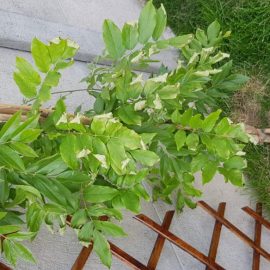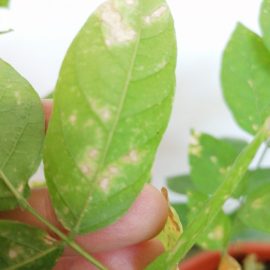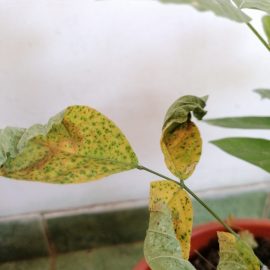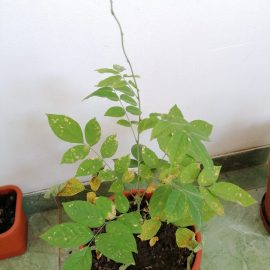Wisteria, planting guide and care work
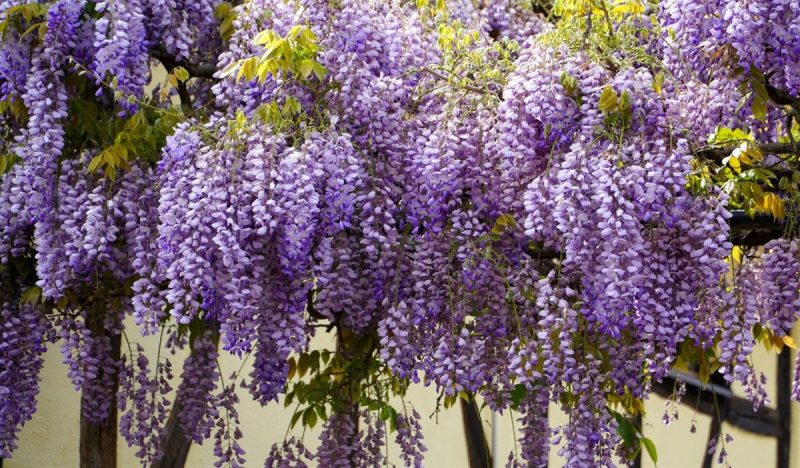
Wisteria is a genus of flowering plants in the Fabaceae family (legumes), native to Eastern Asia and the eastern part of the United States. The genus includes about 10 species of climbing plants, with woody stems, most of which are ornamental. They can grow up to 20 m in height and can extend over 10 m wide surfaces.
The leaves are alternately arranged on the branches and are 15-35 cm long. They have a feather-like shape, made up of 9-19 leaflets. The inflorescences are represented by pendant racemes, with lengths between 10 and 80 cm. They are morphologically similar to those of the genus Laburnum (acacia) but differ in color (purple, pink, or white). Most produce fragrant flowers. The flowering period differs depending on the species. The fruits are pods similar to the ones produced by acacia trees. They protect the seeds and are toxic to humans and animals.
They are grown in parks and gardens, covering columns, walls, pergolas, etc. The largest Wisteria in the world can be found in Sierra Madre, California, it was planted in 1894 and measures approximately 0.4 ha. The name of the genus was given by the botanist Thomas Nuttall, in memory of dr. Caspar Wistar.
Species and varieties
Wisteria floribunda is a species native to Japan, with a height of up to 8 m. It has imparipinnate-compound leaves, consisting of 13-19 leaflets. It blooms in May-June, developing purple flowers, clustered in pendulous racemes of 20-50 cm.
Wisteria sinensis is native to China and has a more vigorous appearance. It can reach a height of 20 m. It forms clusters of purple-blue flowers, 15-30 cm long, which bloom simultaneously. Cultivars:
‘Alba’ – it develops the white flowers.
Wisteria frutescens (American wisteria) is a species native to the part southeastern of the United States. It grows to a height of 15 m. The leaves are pinnate, 10-30 cm long, made up of 9-15 leaflets. It blooms in May-June, develops racemes of 5-15 cm, being the species with the smallest inflorescences.
Wisteria brachybotrys is native to Japan, with a vigorous appearance, reaching up to 19 m in height. The leaves are pubescent, consisting of 13 leaflets. The flowers are purple or white and are clustered in 15 cm long racemes.

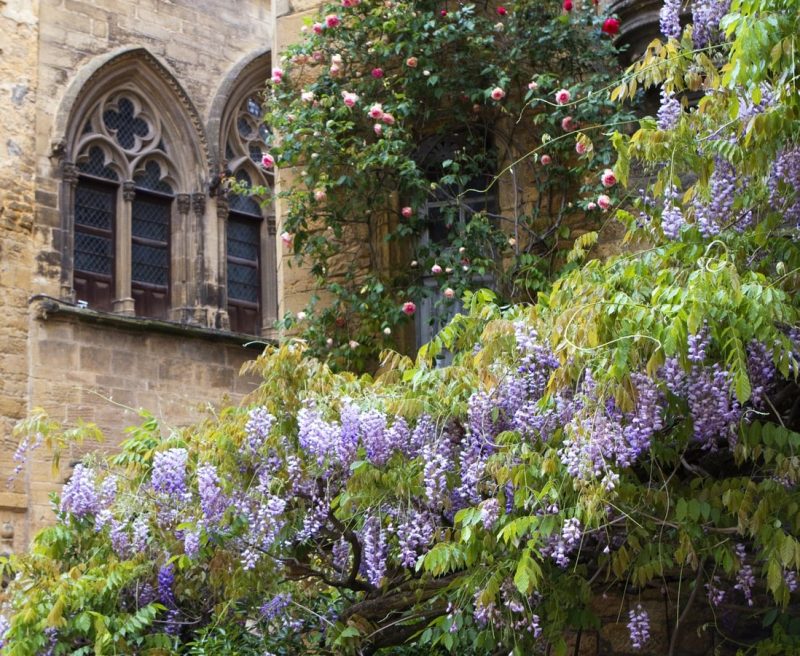
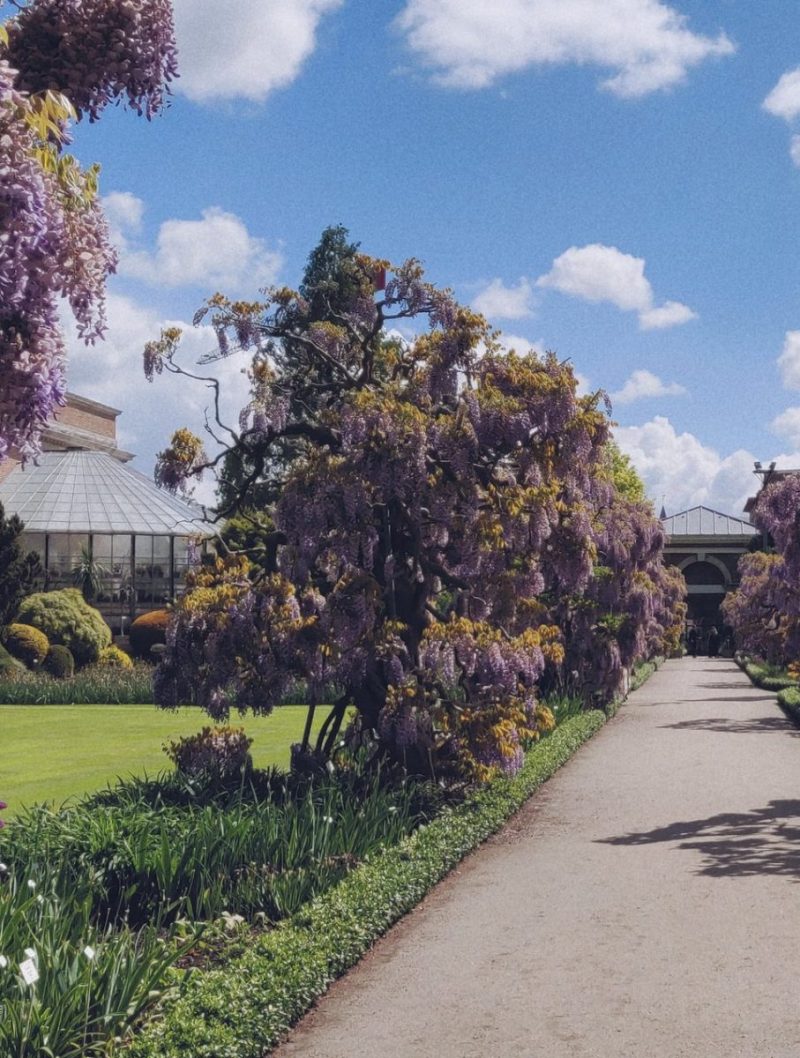
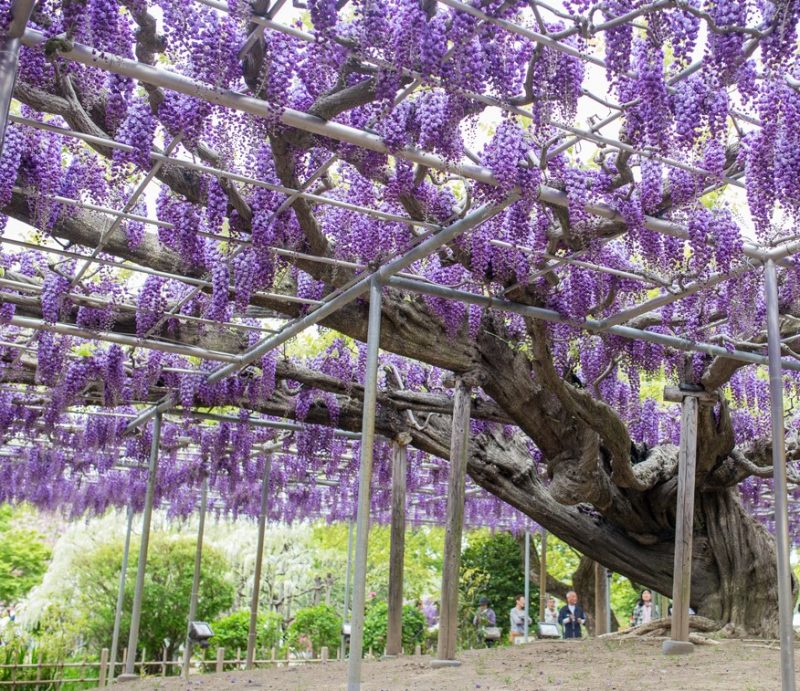
Environmental conditions
Light. They grow both in sunny places and in partial shade. They need light to bloom abundantly.
Temperature. Wisteria species are resistant to frost.
Soil. It prefers a rich, light, limestone-free soil.
Watering
Watering should be done regularly to keep the soil always moist.
Fertilization
To stimulate growth and flowering, during the vegetative growth period (March-September), a fertilizer with low nitrogen content and higher phosphorus and potassium should be administered.
Recommended products
-
You can find products on a different store
Change Store -
You can find products on a different store
Change Store -
You can find products on a different store
Change Store -
You can find products on a different store
Change Store -
You can find products on a different store
Change Store -
You can find products on a different store
Change Store -
You can find products on a different store
Change Store -
You can find products on a different store
Change Store -
You can find products on a different store
Change Store -
You can find products on a different store
Change Store -
You can find products on a different store
Change Store -
You can find products on a different store
Change Store -
You can find products on a different store
Change Store -
You can find products on a different store
Change Store -
You can find products on a different store
Change Store -
You can find products on a different store
Change Store -
You can find products on a different store
Change Store -
You can find products on a different store
Change Store -
You can find products on a different store
Change Store -
You can find products on a different store
Change Store -
You can find products on a different store
Change Store -
You can find products on a different store
Change Store -
You can find products on a different store
Change Store -
You can find products on a different store
Change Store
Pruning
Shape correction cuts should be done in two periods: in March (the shoots grown on the old branches must be kept) and in August (the shoots that have grown strongly have to be shortened).
Recommended products
-
You can find products on a different store
Change Store -
You can find products on a different store
Change Store -
You can find products on a different store
Change Store -
You can find products on a different store
Change Store -
You can find products on a different store
Change Store -
You can find products on a different store
Change Store -
You can find products on a different store
Change Store -
You can find products on a different store
Change Store -
You can find products on a different store
Change Store -
You can find products on a different store
Change Store -
You can find products on a different store
Change Store -
You can find products on a different store
Change Store -
You can find products on a different store
Change Store -
You can find products on a different store
Change Store -
You can find products on a different store
Change Store -
You can find products on a different store
Change Store -
You can find products on a different store
Change Store -
You can find products on a different store
Change Store -
You can find products on a different store
Change Store -
You can find products on a different store
Change Store -
You can find products on a different store
Change Store -
You can find products on a different store
Change Store -
You can find products on a different store
Change Store -
You can find products on a different store
Change Store
Planting
It can be planted in spring or autumn, during the vegetative dormancy period, at temperatures above 5° C, if the soil is not frozen and there is no danger of frost. Be sure to purchase planting material from authorized nurseries. Immediately after planting, the soil has to be well-trodden and watered abundantly. After that, the has to be kept moist.
Propagation
Wisteria can be propagated through seeds, layering, and grafting.
- the seeds have to be sown at the end of April, but the obtained plants will bloom after 6-7 years.
- layering: serpentine.
- grafting must be done in the greenhouse, in February-March, on root fragments.
Recommended products
-
You can find products on a different store
Change Store -
You can find products on a different store
Change Store -
You can find products on a different store
Change Store -
You can find products on a different store
Change Store -
You can find products on a different store
Change Store -
You can find products on a different store
Change Store -
You can find products on a different store
Change Store -
You can find products on a different store
Change Store -
You can find products on a different store
Change Store -
You can find products on a different store
Change Store -
You can find products on a different store
Change Store -
You can find products on a different store
Change Store -
You can find products on a different store
Change Store -
You can find products on a different store
Change Store -
You can find products on a different store
Change Store -
You can find products on a different store
Change Store -
You can find products on a different store
Change Store -
You can find products on a different store
Change Store -
You can find products on a different store
Change Store -
You can find products on a different store
Change Store -
You can find products on a different store
Change Store -
You can find products on a different store
Change Store -
You can find products on a different store
Change Store -
You can find products on a different store
Change Store
In addition:
- because it is part of the legume family, Wisteria forms symbiosis with nitrogen-fixing bacteria in the soil, at the level of the nodules on the roots. Thus, the nitrogen supply is ensured by them. Fertilization with fertilizers that contain a high percentage of nitrogen will result in a vegetative growth of the plant and decreased flowering.
- Wisteria is a honey plant.
- Wisteria pods are dehiscent – they crack strongly at maturity to release the seeds.














































































































































































































































































































































































































































